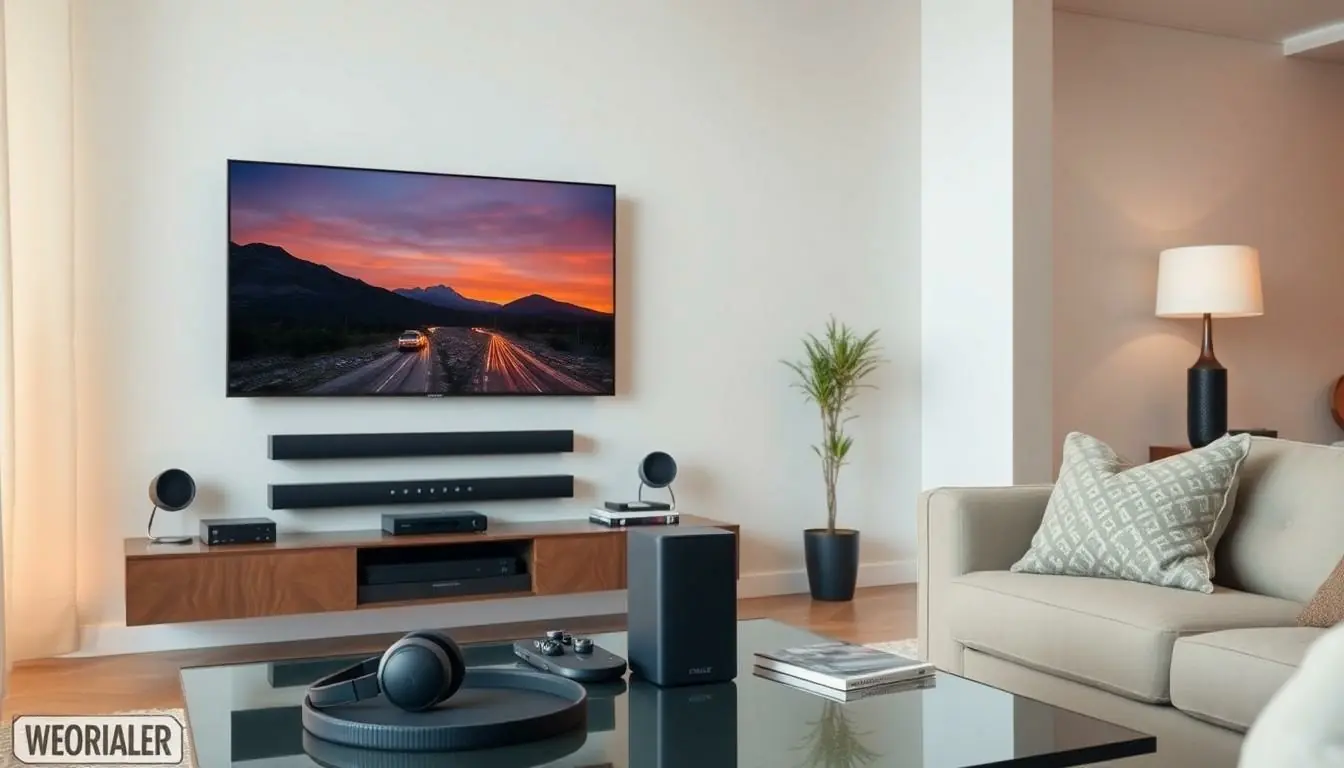In a world where gadgets seem to multiply faster than rabbits, consumer electronics have become the heartbeat of modern life. From smartphones that double as personal assistants to smart fridges that can order groceries, these devices are more than just shiny toys; they’re essential tools that keep our lives running smoothly.
Table of Contents
ToggleWhat Are Consumer Electronics?
Consumer electronics refer to electronic devices designed for everyday use by individuals. These items cater to personal needs and entertainment, ranging from smartphones to televisions. Technology evolves rapidly, leading to innovative products that enhance lifestyle and convenience.
Smartphones serve as multifunctional devices, merging communication, entertainment, and productivity. Tablets offer portable computing solutions, enabling users to browse the internet, read eBooks, and stream videos. Laptops provide versatility and power for work, education, and leisure.
Televisions now include smart features, allowing streaming services and internet connectivity. Smart home devices like thermostats and security cameras enhance home management and safety. Wearable technology, such as fitness trackers, monitors personal health and activity levels.
Gaming consoles deliver immersive experiences, connecting players worldwide. Audio equipment, including headphones and wireless speakers, enables high-quality sound for music and movies. Kitchen appliances, like microwaves and coffee makers, simplify daily tasks and meal preparation.
In essence, consumer electronics have transformed daily life, providing practical solutions and enhancing entertainment experiences. Products in this category contribute to productivity and connectivity, making them integral parts of modern living. As technology advances, consumer electronics continue to adapt, meeting the evolving needs of users.
Types of Consumer Electronics


Consumer electronics encompass a wide range of devices that enhance daily living. These gadgets serve various purposes, from entertainment to health monitoring.
Audio Devices
Audio devices play a significant role in daily experiences. They include headphones, speakers, and soundbars. Many people use headphones for personal listening, providing an immersive experience while enjoying music or podcasts. Speakers come in multiple forms, delivering quality sound to enhance movie nights or social gatherings. Soundbars offer a sleek solution for improving television audio, creating an engaging home theater atmosphere.
Visual Devices
Visual devices provide essential viewing experiences. Smart televisions dominate this category, allowing users to stream content from various platforms effortlessly. Monitors come in various sizes, catering to both work and gaming needs by delivering high resolutions. Projectors offer additional flexibility, enabling users to display content on larger surfaces for presentations or movie nights. These devices shape how people consume visual media, making entertainment more enjoyable.
Wearable Technology
Wearable technology has revolutionized personal health and fitness tracking. Smartwatches monitor heart rates, steps, and sleep patterns, providing valuable insights for users focused on health goals. Fitness trackers serve a similar purpose, often emphasizing exercise metrics for motivation. These wearables integrate seamlessly with smartphones, allowing users to receive notifications and manage calls with ease. Overall, wearable technology encourages healthier lifestyles while keeping users connected.
The Evolution of Consumer Electronics
Consumer electronics have seen remarkable development over the decades, reflecting technological advancements and changing consumer preferences. The evolution of these devices illustrates the shift from basic functionality to sophisticated integration into daily life.
Historical Context
Consumer electronics began in the early 20th century with the introduction of radio sets, which revolutionized communication and entertainment. By the 1950s, television emerged as a household staple, providing visual entertainment. The 1980s introduced personal computers that transformed how people interacted with technology. By the 1990s, mobile phones appeared, paving the way for connectivity on the go. Each decade marked a significant leap in how consumers engage with technology, setting the foundation for future innovations.
Recent Developments
Today, consumer electronics prioritize convenience and connectivity. Smartphones dominate personal technology, offering multifunctional capabilities that integrate communication, entertainment, and productivity tools. Smart home devices provide innovative solutions for managing household tasks with ease, while wearables focus on health and fitness monitoring, encouraging healthier lifestyles. Streaming services have reshaped how media consumption occurs, driving advancements in smart televisions and portable devices. Continuous innovation ensures that consumer electronics remain integral to daily living, adapting to meet evolving needs.
Impact on Society
Consumer electronics significantly influence everyday life, shaping the way people interact with technology and each other.
Enhancements in Daily Life
Smartphones and tablets provide instant access to information, enhancing productivity and communication. Streaming services on smart televisions offer entertainment options that cater to diverse preferences. Wearable technology, such as fitness trackers, promotes active lifestyles by monitoring health metrics. Smart home devices streamline household management, allowing for easier control of appliances and security systems. These innovations simplify everyday tasks, making routine activities more efficient and enjoyable.
Challenges and Concerns
Consumer electronics pose various challenges, including privacy issues related to data collection. Cybersecurity threats from connected devices increase the risk of unauthorized access to personal information. Additionally, over-reliance on technology can lead to reduced social interactions and a decline in physical activity. Environmental concerns also arise from electronic waste generated by discarded devices. Balancing the benefits of consumer electronics with these concerns requires ongoing attention and awareness.





